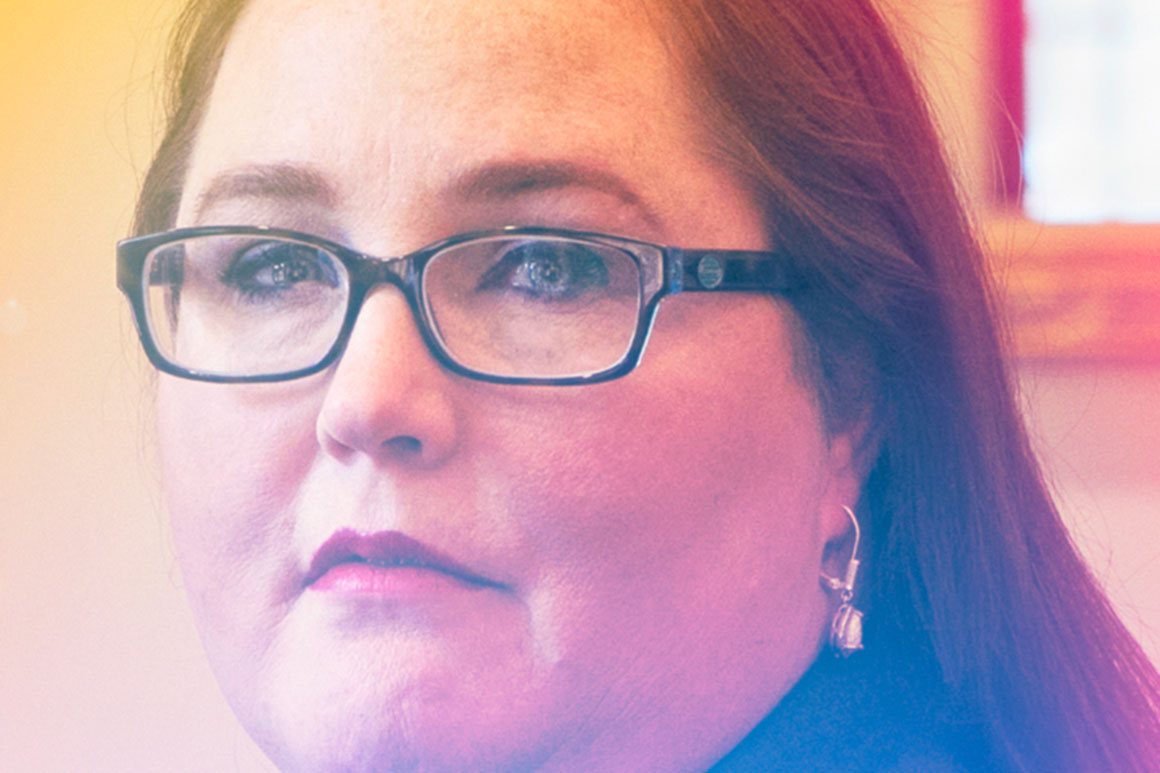
In 2016, the election that truly embarrassed the experts, Bitecofer was teaching in her new job and didn’t put together a forecast. She doesn’t pretend she saw it coming: She says she was as surprised Trump won as anyone else, but what struck her in examining the results, and what she saw as getting lost in the postelection commentary, was exactly how many people voted third party—for the Greens, the Libertarians or Evan McMullin, a former CIA operative who was running on behalf of the “Never Trump” wing of the Republican Party.
Hillary Clinton had run an entire campaign built around classic assumptions: She was trying to pick off Republicans and Republican-leaning independents appalled by Trump. So she chose a bland white man, Tim Kaine, as a running mate; it also explained her policy-lite messaging and her ads. But in the end, almost all of those voters stuck with the GOP. The voters who voted third party should have been Democratic voters—they were disproportionately young, diverse and college educated—but they were turned off by the divisive Democratic primary, and the Clinton camp made no effort to activate them in the general election.
As she delved further into the data on 2016, Bitecofer noticed something else. As much as the media had harped on the narrative that a majority of white women had voted for Trump, the election also signaled the first time that a majority of college-educated white men had voted for the Democratic Party. There was a long-term-realignment happening in America, and 2016 had accelerated it.
Part of Bitecofer’s job involved polling Virginia, and she saw a Democratic counterwave building there in 2017. She noted to Democrats in the state that they should spend resources in areas that had traditionally been off limits. Had they done so, Bitecofer says, they could have flipped the Legislature that year. (Instead it flipped in 2019.)
When 2018 rolled around, she saw what was coming: “College educated white men, and especially college educated white women,” she said, “were going to be on fucking fire.”
It didn’t matter who was running; it mattered who was voting. From there, the model followed. She put out her forecast for the general election when there were still candidates battling it out in primaries.
Bitecofer’s view of the electorate is driven, in part, by a new way to think about why Americans vote the way they do. She counts as an intellectual mentor Alan Abramowitz, a professor of political science at Emory University who popularized the concept of “negative partisanship,” the idea that voters are more motivated to defeat the other side than by any particular policy goals.
In a piece explaining his work in POLITICO Magazine, Abramowitz wrote: “Over the past few decades, American politics has become like a bitter sports rivalry, in which the parties hang together mainly out of sheer hatred of the other team, rather than a shared sense of purpose. Republicans might not love the president, but they absolutely loathe his Democratic adversaries. And it’s also true of Democrats, who might be consumed by their internal feuds over foreign policy and the proper role of government were it not for Trump.”
Bitecofer took this insight and mapped it across the country. As she sees it, it isn’t quite right to refer to a Democratic or Republican “base.” Rather, there are Democratic and Republican coalitions, the first made of people of color, college-educated whites and people in metropolitan areas; the second, mostly noncollege whites, with a smattering of religious-minded voters, financiers and people in business, largely in rural and exurban counties.
“In the polarized era, the outcome isn’t really about the candidates. What matters is what percentage of the electorate is Republican and Republican leaners, and what percentage is Democratic and Democratic leaners, and how they get activated,” she said.
Accordingly, she believed that whom the Democrats nominated didn’t matter much, and while the rest of the country focused on the districts where Hillary Clinton defeated Trump, she thought those were already mostly in the bag, and so focused instead on the 20 or so districts where Trump performed worse than Mitt Romney had in 2012. Those were places with latent Democratic possibility, and had the national party recognized it earlier, they could have flipped even more seats.
Since she was new on the forecasting scene, having sat out the 2016 election, Bitecofer took to Twitter, where she had a mere 600-odd followers, and started flogging her analysis relentlessly. “I decided I’d market it on Twitter by being kind of like this clunky annoying little sister on all the big threads. I would jump on Nate Cohn and Nate Silver threads to promote the forecast. And it was just when the generic ballot was starting to narrow and all the other analysts were saying, ‘Oh the Democrats are going to screw this up. They are overreaching. They are going to get 23 seats if they are lucky.’ And I just came out swinging.”
And while other forecasters picked a range, Bitecofer picked a number—42, only one more than the actual number of seats Democrats ended up winning in the House. (As other forecasters saw the Democrats’ chances dropping, she revised it upward in the race’s waning days, saying in the final week that the Democrats would net 45 seats.) The forecast, and the relentless Twitter-hyping, brought her recognition. The woman who decided to get a degree in political science because she heard Rachel Maddow on the radio was suddenly on Rachel Maddow’s network. In the MSNBC Green Room before a guest appearance on “The Last Word with Lawrence O’Donnell,” she wrote on the chalkboard: “Rachel’s Bucket List: Make it to MSNBC Green Room.”
Bitecofer’s approach to getting noticed did not endear her to many people in the insular world of elections forecasting, where a certain modesty and an ethos of letting the work speak for itself prevails.
“She has taken a Krassenstein Brothers approach at getting attention for her forecasts,” says the election forecaster Dave Wasserman, House editor of the Cook Political Report, referring to the pair of anti-Trump bros who gained over a million Twitter followers between them, mostly by being some of the first people to reply to Trump tweets and by stirring up #Resistance memes. “In my view that is unfair to the many thoughtful forecasters who don’t relentlessly self-promote.”
He questions her central idea—that elections are won by turnout, and by people entering and exiting the electorate rather than by switching sides—as one that simply ignores many basic observations about how politics works.
“The idea that turnout explains every election result, I am sorry, but that is just factually not true,” said Wasserman. “There are a significant number of persuadable voters who bounce back and forth between the two parties depending on the candidates and depending on the year. And there are absolutely millions of voters who voted for Donald Trump in 2016 and for a Democratic congressional candidate in 2018 and did so because they were persuaded by Democratic campaign outreach.
“She would be well-served as an analyst,” Wasserman added, “if she visited some of the counties in Iowa which voted overwhelmingly for Obama and then overwhelmingly for Trump. These are not places where turnout explains the results. She would learn that persuasion and swing voters are the dominant variable in presidential elections, particularly in those battleground states.”
Bitecofer, as it happens, flew to Iowa for three days before and after the caucuses, a few weeks after I spoke to Wasserman—and rejects the criticism that somehow getting out in the world would improve her modeling. If she allowed personal conversations to influence her work, she said, then “I would be a god-fucking awful quantitative scientist.”
As for the overall role of those voters, she maintains that actual swing voters are a small percentage of the result, even in counties where the vote swing is as large as Wasserman describes. Don’t talk to people in the bleachers of rallies; check the voter file, she says. “It would be one thing if that county had 100,000 people in it who voted in 2012, and then it was the same 100,000 who voted in 2016, but that is not what is happening,” she says. “The pool of who shows up changes.”
Source: politico.com
See more here: news365.stream





